Christmas in Mexico
México » Traditions » Christmas
Cover photo by Getty Images
The Meaning and Traditions of CHRISTMAS
Christmas, celebrated on the 25th of December, is a time of joy, giving, and familial warmth. Rooted in the Christian faith, it marks the birth of Jesus Christ in Bethlehem, a significant event observed by various Christian denominations. Beyond religious observances, Christmas embodies values such as generosity, self-improvement, and the belief that collective efforts can bring about miracles, fostering positive changes in our surroundings.
The Christian Significance: Christmas, or “Nativitas” in Latin, holds a pivotal place in Christianity, alongside Easter and Pentecost. Its celebration on the 25th of December, following the Gregorian calendar, is widespread among Catholics, Anglicans, Protestants, and many Orthodox Churches. In predominantly Catholic countries like Mexico, diverse regional traditions enrich the Christmas experience.
Cultural and Popular Significance: While rooted in Christian tradition, Christmas has become culturally significant, especially for children. The festivities begin on the 24th of December, a day off nationwide, fostering family gatherings and spiritual reflection. Despite its religious origins, Christmas intertwines with pagan customs, creating a unique blend of cultural and spiritual practices.
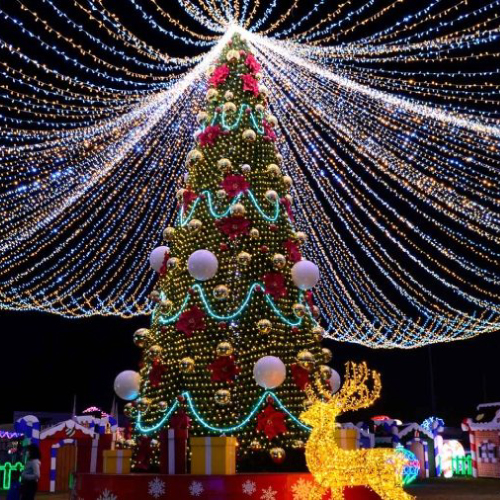
Symbols and Traditions: For many, Christmas is a tapestry of childhood symbols—decorated trees, festive lights, the aroma of baked goods, and the resonance of carols. It encapsulates myths, from the birth of Jesus to tales of benevolent spirits offering second chances to the miserly. It is a season that, through symbols and traditions, aims to bring out the best in humanity, encouraging a renewal of spirit and a belief in the enduring magic that can fulfill the dreams of our inner child.
Season of Values: Derived from the Latin “nativitas,” meaning birth, Christmas is a religious celebration promoting values like peace, love, solidarity, unity, and hope. The season kicks off with posadas, continues through Christmas Eve, the main day of celebration, and concludes with Epiphany or Three Kings’ Day. Throughout, Christians seek to embody and promote these values, emphasizing the spiritual essence of the holiday.
Historical Perspectives: The origins of Christmas are intertwined with historical events and an effort by Emperor Constantine to Christianize pagan festivities. The aim was to replace the Saturnalia, a pagan celebration, with a Christian observance of the birth of Jesus. It’s a fascinating blend of historical events and religious significance, as Christmas emerged as a response to the need for a Christian alternative to ancient pagan traditions.
The Nativity Scene: At the heart of Christmas lies the iconic Nativity scene, a representation of the birth of Jesus. Families eagerly construct these scenes, and children especially anticipate the traditions associated with them. While historical records lack precise details of Jesus’s birth, the gospels of Luke and Matthew provide references, and the adoption of ancient pagan rites further enriched the holiday’s traditions.
Christmas, beyond its religious roots, has become a celebration of shared values, cultural traditions, and the enduring spirit of giving. Whether through religious ceremonies, festive decorations, or acts of kindness, the season encourages individuals to reflect on the best within themselves, fostering a sense of community and goodwill. As we embrace the magic of Christmas, may it serve as a reminder that, even in the midst of diverse traditions, the essence of the season remains universal—an invitation to embody love, joy, and hope.
How Christmas is Celebrated in Mexico
In Mexico, the celebration of Christmas revolves around family, emphasizing the importance of bringing together all members of the household. Major cities organize various activities for all ages, such as illuminating streets and public spaces. The rich Mexican Christmas tradition encompasses at least 30 typical customs that blend Novohispanic, Catholic influences, and elements from indigenous peoples, as well as Western and Asian cultures.
December 12: Our Lady of Guadalupe
The Christmas season in Mexico kicks off on December 12 with the celebration of Our Lady of Guadalupe, the patron saint of Mexico and the Americas. This day commemorates the appearance of the Virgin Mary to Juan Diego Cuauhtlatoatzin in 1531. The festivities involve religious services, chants, traditional dances, pilgrimages to the Basilica of Guadalupe, and dressing children in typical outfits in honor of Juan Diego. Devotion and offerings of flowers and candles are integral parts of the celebration.
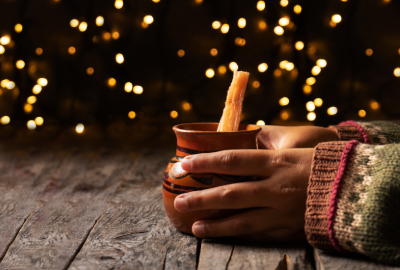
December 16-24: Advent Season
From December 12 onwards, the intensity of the festivities grows, marking the beginning of the traditional posadas that take place from December 16 to Christmas Eve. These processions, focused on the Holy Family, involve chants, representations of Mary and Joseph, and the search for shelter, followed by biblical readings and festivities at home. The Advent Season is an expression of syncretism, blending elements of Mexican and Western culture.
December 25 & January 1: Christmas and New Year
The main celebration of Christmas in Mexico takes place on the night of December 24, with families attending mass or gathering at home to welcome midnight and the arrival of Christmas. Traditions such as nativity scenes, piñatas, and traditional dishes like tamales and rompope are characteristic elements of the celebration. On New Year’s Eve, Spanish traditions are observed, such as eating twelve grapes at midnight and preparing lentil dishes to attract good luck.
January 6: Three Kings’ Day
Although Santa Claus has gained popularity, Mexican tradition highlights Three Kings’ Day on January 6 as the culmination of the Christmas season. Children write letters to the Three Wise Men, hoping to receive gifts the next day. The “rosca de reyes,” an oval-shaped sweet bread, is enjoyed with family, and whoever finds the figurine in their slice commits to organizing a party with tamales on Candlemas Day.
February 2: Candlemas Day
Candlemas Day marks the official end of the Christmas season in Mexico. While known for the preparation and consumption of tamales, it also holds religious significance, commemorating the Virgin Mary of Candlemas. This day, 40 days after Christmas and officially concluding the Christmas season, coincides with the Aztec New Year, closing the Mexican Christmas festivities with a blend of religious elements and traditions rooted in local culture.
Christmas Traditions and Customs in Mexico
In Mexico, much like in many Western countries, the month of December holds a special significance as a time to share moments with family, reunite with friends and relatives, and recharge energy to welcome the next year with renewed enthusiasm.
Christmas in Mexico is infused with various traditions and customs that add a unique touch to the celebration. Family events like Posadas and Three Kings’ Day take center stage, along with delightful traditional dishes such as tamales and sweets that are eagerly anticipated during this time of the year. Streets come alive with the vibrant colors of ‘Nochebuena’ flowers, creating a festive and joyful atmosphere.
The Christmas Tree
The tradition of the Christmas tree has its roots in an ancient Germanic story that suggested all celestial bodies, including Earth, were suspended from an immense tree called the “Tree of the Universe.” It was believed that its roots connected to the underworld, while its canopy reached towards the heavens.

In 790, this tradition evolved to symbolize God’s eternal love. The tree transformed into a pine adorned with apples, symbolizing human temptations, and candles representing the light of the world and divine grace. The first Christmas tree decorated as we know it today was recorded in Germany in 1605, initially used to ward off the winter chill.
Today, the Christmas tree is a central and emblematic piece of December festivities. Families come together joyfully to decorate the tree with bright lights, garlands, ornaments, and the traditional star on top.
The Christmas Tree Tradition in Europe
The custom of placing a Christmas tree originated in Northern Europe, where early Christians discovered that inhabitants celebrated the birth of Frey, the god of the Sun and fertility, by adorning a tree symbolizing the “Tree of the Universe” called Yggdrasil. In its canopy was Asgard, the abode of the gods, while in the deepest roots lay Helheim, the realm of the dead.
The tradition was adopted by evangelizers to commemorate the birth of Christ. Saint Boniface, an evangelizer in Germany, chose the evergreen pine as a symbol of God’s love and adorned it with apples representing original sin and candles symbolizing the light of the world. Over time, apples and candles transformed into baubles, lights, and other ornaments.
Essentials for a Traditional Christmas Tree
- The Christmas star: Symbol of guidance, referring to the Star of Bethlehem.
- Baubles: Originally representing apples, symbolizing temptations.
- Garlands and tinsel: Symbol of unity and joy.
- Lights: Initially candles, symbolizing Jesus’ light illuminating the world.
Over time, the tradition of placing gifts for children under the tree, sent by Santa Claus/Father Christmas or the Three Wise Men, depending on local customs, was incorporated.
Posadas
In Mexico, Posadas are deeply rooted festivities that take place annually from December 16th to the 24th. This tradition, originating in colonial times, when the Catholic Church sought to replace Aztec celebrations related to the god of war, Huitzilopochtli, has expanded to countries such as Panama, Honduras, Guatemala, and El Salvador. The pre-Hispanic festivities known as Panquetzaliztli occurred from December 16th to the 26th.
Posadas were devised by the Augustinian friar Diego Soria to facilitate the conversion of the conquered. During these celebrations, the journeys of Joseph and the Virgin Mary from Nazareth to Bethlehem are represented, culminating in the birth of Jesus Christ. Over time, the celebration took root in neighborhoods and homes, replacing religious music with popular songs in the 18th century.
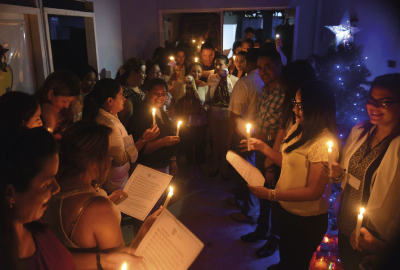
Each Posada involves a procession led by a child carrying porcelain figures of the Virgin Mary and Saint Joseph. The procession, starting nine days before Christmas Eve, traverses the city streets, accompanied by family, friends, and neighbors. Carols are sung, and candles are lit as they advance towards the designated house for that night, chosen in advance. This tradition allows for the exploration of different areas of the city during the festivities.
Upon reaching the house, a piñata is broken, symbolizing the overcoming of the seven deadly sins through faith. Participants, blindfolded, represent believers who, through the virtue of faith, overcome sin and regain supernatural grace, manifested in the fall of fruits and sweets.
Posadas are a central tradition in Mexico, emphasizing the importance of family and faith during the Christmas season. The celebration includes processions, songs, candles, and community participation. In some cities, such as Veracruz, children carry out a version called “Las Ramas,” where altars are adorned with branches and religious figures, singing carols and requesting contributions for aguinaldos.
Mexican culture immerses itself in Christmas celebrations from December 16th to Christmas Eve, with Posadas marking the beginning of the festivities. Devotion is so deep that even pre-Posadas are held before December 16th. These celebrations culminate on December 24th with a hearty Christmas Eve dinner, strengthening family bonds.
Another characteristic activity during the Christmas season in Mexico is the tradition of asking for aguinaldo or bolo, especially in the southeastern coastal states of the country. Children roam the streets singing carols in search of sweets or money, creating a festive atmosphere that has spread throughout Mexico.
Piñatas
The colorful and festive piñatas, deeply rooted in Mexican celebrations, have a fascinating origin that traces back to China. In ancient China, during the spring and the beginning of the Chinese New Year, a ceremony took place where the Chinese crafted an ox figure with paper, adorned it with colorful papers, and added agricultural ornaments. This tradition made its way to Mexico, transforming into a unique expression of Christmas culture.
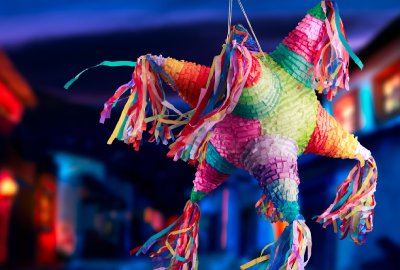
It is said that the piñatas were introduced to Mexico by Spanish friars during their evangelization efforts. These skilled artisans adapted the piñata’s shape to a seven-pointed star, each point symbolizing a deadly sin. The piñata thus became a symbolic representation of the struggle against sins: pride, greed, lust, wrath, gluttony, envy, and sloth.
During the Christmas celebration, the piñata is filled with sweets and fruits, but obtaining these delights is no easy task. With eyes blindfolded with a cloth representing blind faith, participants attempt to hit the piñata with a stick. The first hitter must spin around to lose their sense of direction while others chant encouraging songs. The process is accompanied by the popular song: “¡Dale, dale, dale, no pierdas el tino, porque si lo pierdes, pierdes el camino. Ya le diste una, ya le diste dos, ya le diste tres, y tu tiempo se acaba Una, dos, tres!”.
The piñata, made of cardboard or clay and adorned with bright colors, represents the demon who often presents evil in an attractive way to tempt humans. Breaking the piñata symbolizes victory over sin, and the candies that fall are the reward for demonstrated willpower and faith.
The piñata tradition is not only an exciting game but also an opportunity to share moments of joy and unity. Once the piñata is broken, the celebration continues with the tasting of delicious Mexican dishes such as tamales, buñuelos, churros, punch, and hot chocolate.
Piñatas, with their unique history and symbolic meaning, have become an essential and charming element of Christmas festivities in Mexico.
Nativity scenes
In the vibrant tapestry of Christmas celebrations in Mexico, not only do the characteristic Christmas trees and colorful garlands stand out, but also the emblematic nativities. These detailed representations of the nativity scene are set up starting from December 16, marking the beginning of the celebrations, and are taken down on February 2 at the end of the Christmas season.
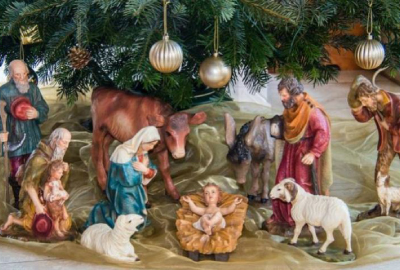
In contrast to the common tradition of placing the Christmas tree in other places, in Mexico, nativities are indispensable. The central figure of the Nativity includes the Virgin Mary, Saint Joseph, and the Baby Jesus, the latter being placed on the night of December 24, symbolizing the day of his birth. Additionally, the figures of the Three Wise Men are added on January 5, along with the animals of the manger, the shepherds, and the angel.
A fascinating peculiarity is found in the region of Michoacán, where nativities take on an artisanal character. Here, the figures are carefully crafted with wood from Morelia or Jacona and textiles from San Lorenzo Purenchecuaro. These pieces are decorated according to local traditions and ethnicities, incorporating representative elements such as fishermen, indigenous people, and dancers of typical Michoacán dances.
On the night of December 24, many Mexican families attend the traditional Midnight Mass, followed by the opening of gifts, placed next to the nativity scene, a gesture that is part of the tradition of Santa Claus. Some children choose to open their gifts on the morning of December 25.
This tradition, far from being extravagant, reflects the deep connection of Mexican families with the Christmas celebration. Aligned with the staging of trees and garlands, the representation of the nativity scene persists from the start of the posadas on December 16 until the closing of the festivities on February 2. The symbolism comes to life especially on Christmas Eve when the Baby Jesus takes his place in the scene, marking the culmination of the festive season.
Pastorelas
Pastorelas, theatrical performances deeply rooted in Mexico’s rich cultural heritage, unfold across the country to reenact the shepherds’ journey to Bethlehem. Known in some Latin American regions as ‘posadas,’ these representations have their origins in sacramental plays brought to the New World by Franciscan missionaries, merging with the beliefs of indigenous American peoples.
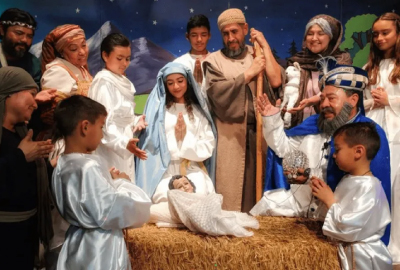
This theatrical genre, distinctive of the December season, dates back to the conquest era, blending storytelling styles of the Aztecs with those of the Spaniards. While the central theme of pastorelas revolves around the birth of Baby Jesus, these works are often infused with satire, double entendre, and a touch of Mexican political humor.
Over the years, pastorelas have evolved into a cultural and regional phenomenon in Mexico. Among the oldest is ‘La Comedia de los Reyes,’ but perhaps none is as renowned as ‘La Pastorela de Tepotzotlán,’ performed near Mexico City in the Hostería del Convento.
The Pastorela de Tepotzotlán
A tradition in the State of Mexico since 1964, is a theatrical gem set in a convent that offers a complete Christmas experience, including the traditional posada request and delicious snacks.
Approximately 150 individuals participate in this event, gathering at the former Jesuit convent in Tepotzotlán to bring this special representation to life. More than just a play, the Pastorela de Tepotzotlán is a living testament to the cultural richness and the deep-rooted nature of Christmas traditions in the heart of Mexico.
The Advent Wreath
The tradition of the Advent Wreath, rooted in European Christian heritage, has found a special home in Mexico. This custom, celebrated during the four weeks leading up to Christmas, involves a beautiful wreath made of branches, usually pine, forming a ring. Adorned with four or even five candles of diverse colors, this wreath has a rich history dating back to the Middle Ages.
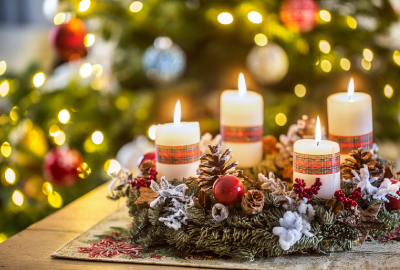
The candles, carefully arranged, are gradually lit on the Sundays preceding Christmas. This act is accompanied by prayers and biblical readings, sometimes performed after the Sunday mass in the Roman Catholic tradition. Each week, a new candle is lit, creating symbolic anticipation for the arrival of the Savior. The culmination of this tradition occurs on Christmas Eve when the last candle, often representing Christ, is lit.
The origin of the Advent Wreath dates back to a time when the Church sought to establish guidance in the liturgical calendar during the Middle Ages. Back then, Advent was celebrated with acts of fasting and prayer, a form of spiritual preparation for the sacred festival. Although the ring and candles were common elements before Christianity, they were later integrated into this tradition. Some believe that the wreath, as we know it today, originated in the 16th century in Germany.
This Christian symbolism transcends mere religious ritual. Before its association with Christianity, Advent wreaths symbolized hope and prosperity for a new cycle of nature emerging after the winter season. Thus, the Advent Wreath in Mexico blends spiritual richness with a deep connection to nature and renewal.
Fairs and ‘Poinsettias’
During the Christmas season in Mexico, fairs and artisan markets come alive, offering a wide variety of festive decorations such as fruits, Christmas ornaments, piñatas, and sweets, among other wonders. These vibrant spaces become colorful stages where the essence of Christmas merges with creativity and tradition.
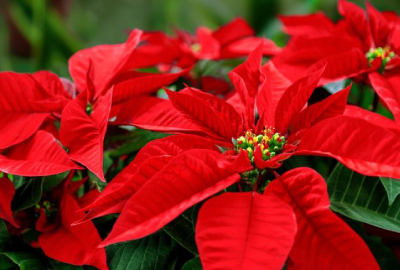
The undisputed star of these festivities is the ‘Poinsettia,’ a red-toned flower that dazzles throughout Mexico. Its history dates back to pre-Hispanic times when indigenous people considered it a symbol of new life for warriors fallen in battle. Over time, this flower became the favorite of U.S. Ambassador Joel Poinsett, who introduced it to his country, giving it the name we know today.
The ‘Poinsettia’ has not only captured hearts in Mexico but has also become a global icon of the Christmas season. However, did you know that this flower is native to our country?
Since ancient times, the ‘Poinsettia’ was valued for its ceremonial and medicinal uses in the pre-Columbian era. It was after Mexico’s independence that its popularity transcended national borders, winning admirers worldwide.
Thus, the ‘Poinsettia’ not only adorns our homes during Christmas but also carries with it a rich history that connects the past with the present, marking the festive season with its vibrant and meaningful presence.
New Year in Mexico
With the Christmas festivities saying goodbye, Mexico enthusiastically immerses itself in the celebration of the New Year, overflowing with energy with dazzling fireworks that light up the sky and bustling gatherings that color the streets.
A charming and delicious tradition that stands out in the Mexican New Year celebration is the ritual of eating twelve grapes at midnight. Each grape symbolizes good luck for each month of the coming year, and participants savor them with joy, expressing a wish with each sweet fruit. This emotional act adds a touch of whimsy to the festivities, creating shared anticipation as the clock ticks toward the start of the new year.

The celebration of the New Year in Mexico is distinguished by its uniqueness, not only in the varied dinners that go beyond the traditional turkey, but also in the practices, celebrations and traditions that characterize Mexicans, which can be described as extravagant.
The arrival of a new year in Mexico awakens expectations and joy in families, marking a favorable moment for reunion and renewal. The celebration has similarities with Christmas Eve, but at midnight, it is toasted with a clash of glasses and twelve grapes are consumed quickly, each one representing a month of the next year.
In addition to these traditions, superstitions are also intertwined in the celebration. Elements such as lentils, coin symbols, or the consumption of pork as an omen of abundance, reflect the cultural diversity of customs, enriching the festival. In some homes, the Midnight Mass or visits to church on January 1 persist as acts to give thanks for the previous year and ask for prosperity in the new year, although the current trend is to celebrate in bars and restaurants.
The New Year’s Dinner menu is an amalgam of flavors that includes stuffed turkey, cod, romeritos, shrimp broth, pork leg, marinated loin, apple salad, pasta, dessert and even pozole. An explosion of aromas and flavors that reflect the culinary richness of Mexico on this special occasion.
New Year rituals
In Mexico, the belief in rituals to attract love, money and travel during the new year is strongly rooted. It is said that the fate of the coming year may depend on small acts, such as choosing the right underwear.
One of the simplest and most discreet rituals involves the color of the underwear worn on New Year’s Eve. Blue is associated with big projects, red with love and relationships, purple with inner connection, and yellow with increased prosperity. Some choose to wear up to three different colors of underwear to maximize their chances.
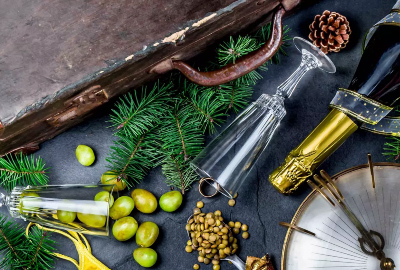
Another ritual suggests running with suitcases after midnight to attract travel and vacations in the new year. Although this practice may seem peculiar to onlookers, participants firmly believe in its beneficial effects.
Lentils are key elements in Mexican end-of-year celebrations, associated with health and prosperity. Whether eating them or carrying them in pockets and purses, lentils are essential at the end of the year.
The tradition of wearing new clothes at the New Year’s celebration not only reflects vanity, but also the belief that wearing new clothes will attract frequent new clothes throughout the year.
Finally, the classic tradition of eating twelve grapes at the stroke of midnight to make twelve wishes persists as the most popular ritual during “New Year’s Eve.” This act, which originated in Spain in the 1920s, has spread throughout the Spanish-speaking world and is considered an auspicious start to the year, where each grape eaten supposedly brings with it a month of good fortune.
New Year’s Dinner
Although stuffed turkey is the traditional dinner in many places around the world, in Mexico, more native and equally delicious options are opted for.
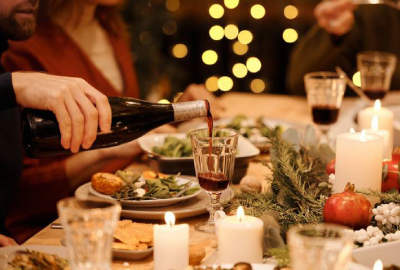
Baked pork loin or leg is an outstanding choice, appreciated for its versatility and for the different sweet and sour sauces with which it can be prepared, making it an essential dish on Mexican tables.
Mixiotes, tasty and varied, are an integral part of Mexican culture. They can be made with different types of meat, such as chicken, fish, lamb and pork, reserving them for special occasions such as the New Year.
Romeritos con mole, another classic of the December festivities, offer a meatless option but full of flavor. Adding shrimp to this delicious combination can be the perfect choice to elevate the dish.
For those looking for something more elaborate, cod is presented as a refined option, requiring careful preparation days before the celebration.
As a perfect complement, it is suggested to accompany these dishes with a glass of punch, a glass of cider, spaghetti and a Russian salad, thus creating an unforgettable Mexican New Year’s dinner.
The Three Wise Men
In Mexico, Christmas festivities go beyond the figure of Santa Claus. Although this character has gained popularity throughout Latin America in recent years, the tradition of the Three Wise Men remains deeply rooted, especially among the little ones who write letters with their most cherished wishes to receive gifts on January 6.
The Day of the Three Wise Men is celebrated with family and friends, marked by the enjoyment of the emblematic Rosca de Reyes. This delicious bread, made with flour, eggs, yeast, sugar, and butter, is adorned with crystallized fruits, cooked with quicklime, giving it a similar touch to candied fruit. Inside, plastic figurines of the baby Jesus are hidden.
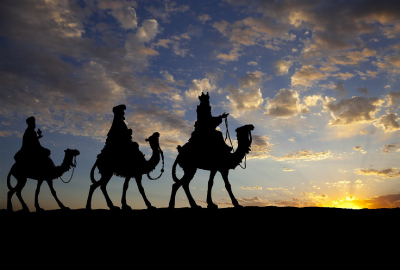
The fortunate one who finds one of these figurines in their slice of Rosca must organize a party on February 2, coinciding with the Day of the Candelaria. This celebration brings together the same participants from Three Kings’ Day, thus concluding the Christmas festival cycle.
Another special moment is January 6, when the Three Wise Men arrive bearing gifts for children who, days earlier, have sent their letters with their dreams and wishes. This day becomes an occasion for the gathering of families and friends, who share the traditional Rosca de Reyes.
This bread, decorated with ate, candied fruits such as figs or oranges, and concha toppings, hides inside dolls symbolizing the Baby Jesus. The person who finds a doll when cutting their portion must treat others to tamales on February 2, the Candelaria.
In addition, festivities include parades, the writing of letters by boys and girls, and the excited anticipation of the night from January 5 to 6 to receive the long-awaited gifts. The Rosca de Reyes, with its internal surprise, turns the fortunate person into the host of the Candelaria on February 2, marking the conclusion of Christmas celebrations.
These traditions, infused with family warmth and a connection to cultural roots, are part of the unique fabric that defines Mexican festivities. Unity, joy, and sharing intertwine in these celebrations, creating memorable experiences that linger in the hearts of those who live them.
Unique Traditions Throughout Mexico
When we speak of Christmas in Mexico, we are not referring solely to specific geographical regions but to the various localities that harbor deeply rooted traditions, blending indigenous customs with the annual celebration of the festive season.
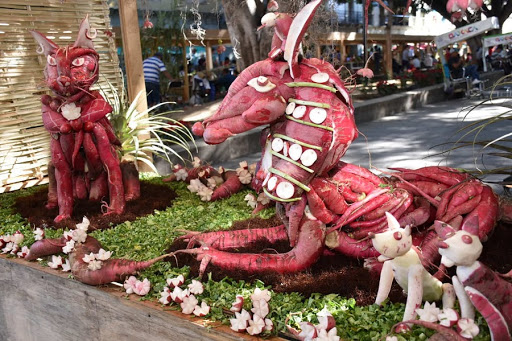
Night of the Radishes in Oaxaca
The city of Oaxaca is renowned for hosting one of the most unique celebrations, the “Night of the Radishes.” This festival, taking place on December 23, stands out for the creation and exhibition of designs crafted from radishes and other native plants. In the city’s main square, gardeners and florists bring their creations to life using radishes, totomoxtle, and the immortal flower.
Takari Festival in Michoacán
Michoacán emerges as another Mexican state with distinctive Christmas traditions, where the rich Purepecha culture converges with Hispanic influence. The notable “Takari Festival,” held in the town of Tarímbaro, features a dance winding through the streets while collecting hay to make the bed for the Baby Jesus. This celebration takes place annually from December 25 to 28, with the participation of both adults and children.
Children Decorating Little Boxes
In various states of Mexico, young children engage in traditions where they decorate small boxes with images of the Virgin of Guadalupe or the Baby Jesus. Accompanying these representations is a branch of areca or lemongrass, creating small altars full of devotion and creativity.
These celebrations, unique in every corner of Mexico, showcase the cultural richness and diversity that enrich the Christmas experience in this vibrant country.
More MEXICAN TRADITIONS
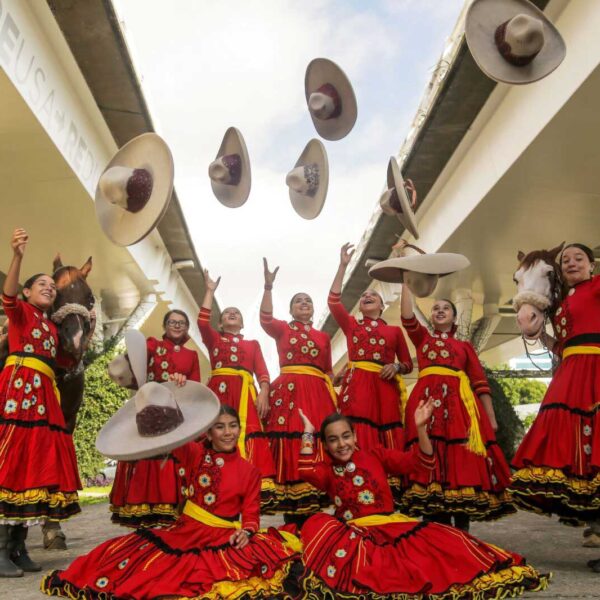
Traditions of Jalisco
Jalisco is full of surprises. A cosmopolitan metropolis modern, but authentic and traditional at the same time. Many of things which are typically associated with Mexico have their origins in Jalisco. These include rodeos called charreadas, mariachis, and of course the tequila.… Read More
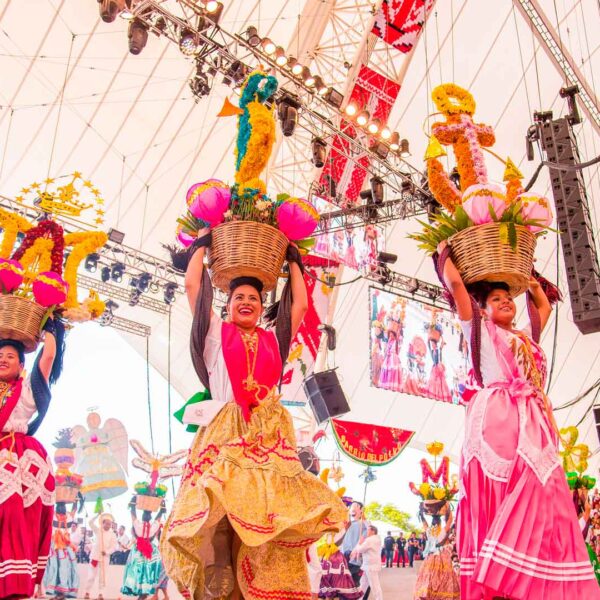
La Guelaguetza
The Guelaguetza is an ancient tradition with pre-Hispanic roots related to agricultural ceremonies of gratitude to the gods for the arrival of the rains and the lifting of the harvest at the end of July and is the largest festival in Oaxaca. La Guelaguetza is a celebration of gratitude for the arrival of the rains and the harvests, in which representatives from all regions of the state gather in the capital to share their culture through dances, crafts and food. La Guelaguetza is celebrated every year on the two Mondays after July 16, except when the first Monday is July 18, Benito Juárez’s death anniversary. Many types of dances also participate, such as the traditional Flor de Piña; where women usually dress in Huipiles representing the different regions of the state, as well as with their pineapple on their shoulders, they comb their hair with beautiful long braids accompanied by their ribbons and can not missing her accessories that is, bracelets, necklaces and earrings of precious colors and her beautiful makeup.… Read More
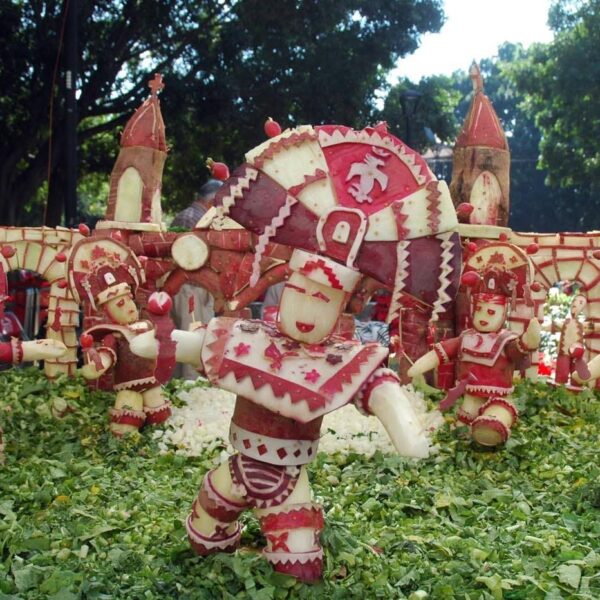
Traditions of Oaxaca
In the state of Oaxaca there are many customs and traditions throughout the year, and within the state, said that they have the same purpose of celebration but with different things, in fact from one region to another or even more from one town to another, the Customs vary for perhaps details but that is what makes them authentic. All the holidays are celebrated, the profane and the religious ones. The festival calendar is extensive due to the diversity of ethnic groups, which they still conserve. Oaxaca has a combination in its traditions of the culture of the ancestors and the current culture, a state that does not lose its customs, adapts them to new times and needs.… Read More
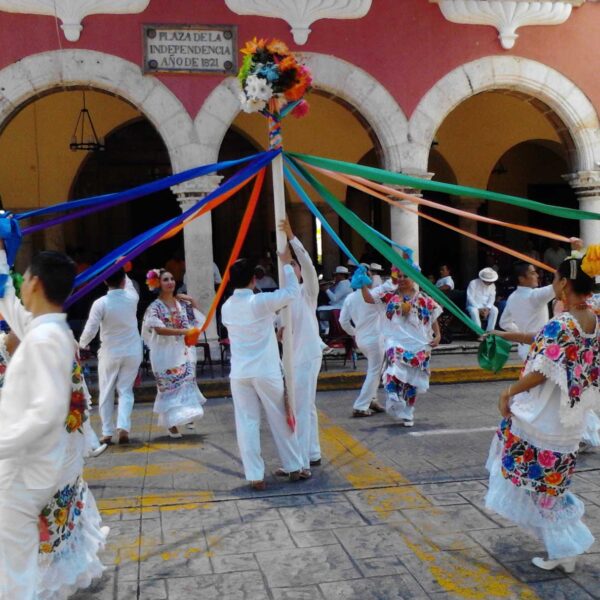
Traditions of Yucatan
The people from Yucatan integrate their beliefs, celebrations and ancient customs into their daily lives, and create a very special kind of magical syncretism. The handcrafts, the cuisine, the music, the folklore, and the traditions are irrefutable proof that Yucatan is a magic land with open, warm atmosphere, where visitors always feel welcome.… Read More
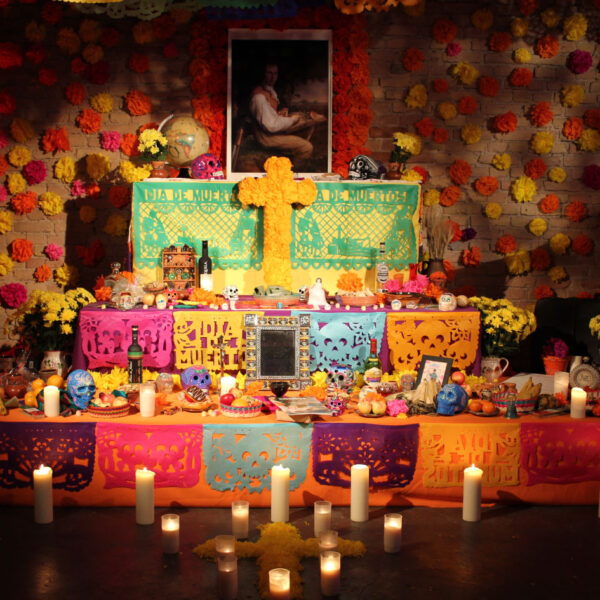
Day of the Dead in Mexico
The Day of the Dead in Mexico is a very old festivity that dates back to the indigenous vision of death. The celebration takes place on the night of November 2 of each year. The celebration consists of gathering the objects that the dead used in life and their favorite food, as well as flowers to make a path that guides the deceased towards their offering, candles or candlesticks on an altar. In addition to the Pan de Muerto and the sugar skulls.… Read More
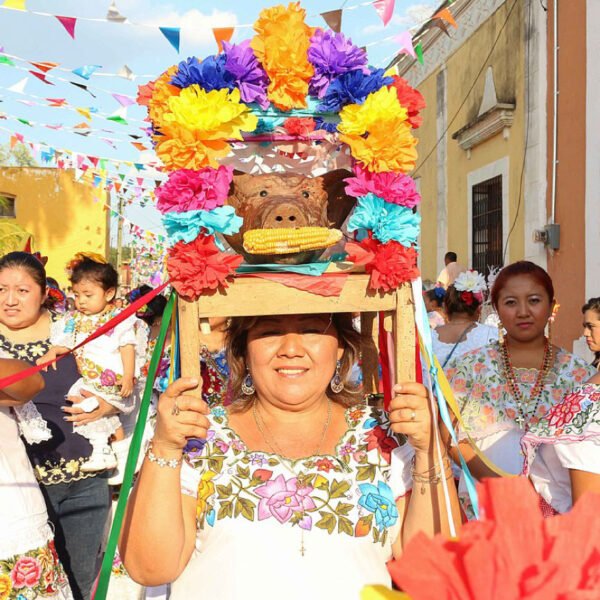
Traditions of Campeche
Campeche is without a doubt one of the most beautiful and traditional States of Mexico. Campeche is located in the southeast of Mexico and borders the states of Yucatan to the north, the state of Quintana Roo to the east, and the countries of Guatemala and Belize to the south. The capital of this State is called San Francisco de Campeche and it is also the city with the largest population in Campeche.… Read More
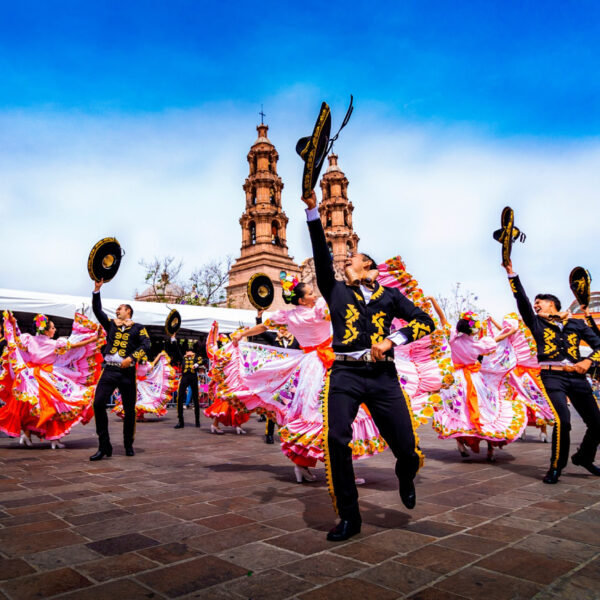
Traditions of Aguascalientes
Aguascalientes is a state of traditions and customs, a destination famous for its internationally recognized fairs and festivals; It is prepared to receive tourists and visitors throughout the year, some of its main tourist attractions are the San Marcos National Fair, the Skulls Cultural Festival, the Grape and Artisanal Cheese Fair.… Read More
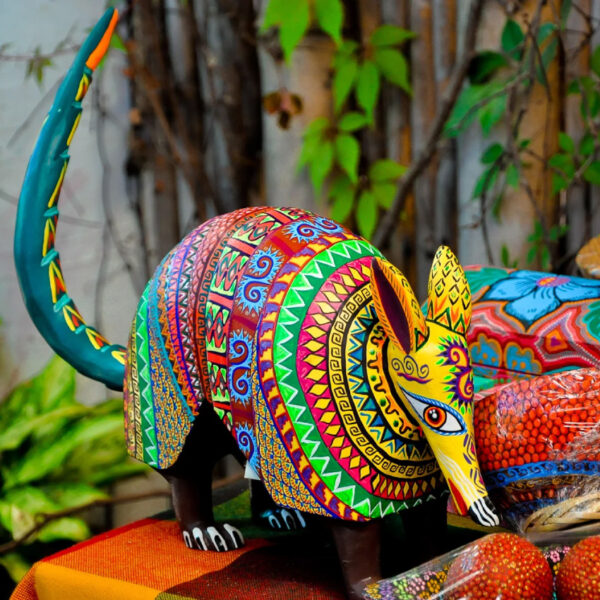
Handicrafts from Oaxaca
Handicrafts from Oaxaca are a great tradition and they offer a diversity that denotes the artistic richness and imagination of its people. The talented artisans of Oaxaca make beautiful pieces of clay, textiles, wood, metal, skins and other materials, forming a rich and varied folk art in both decorative and useful items.… Read More
CHRISTMAS in MEXICO Guided Tours
Flights & Hotels in MEXICO
More Tourist Attractions in MEXICO

Beaches
On the Beaches of Mexico you can immerse yourself in the intense blue ocean of the Pacific bays, sunbathe on the shore of the warm and transparent waves of the Caribbean Sea in Quintana Roo or even rest on the beautiful coasts of the Gulf of Mexico. Mexican beaches hide wonderful secrets for the traveler. By visiting them, in addition to enjoying the excellent climate and water activities, you can discover splendid archaeological sites and interesting colonial cities without traveling long distances.… Read More

Archaeological Sites
The Archaeological Zones are the cultural past of every Mexican. You will be amazed at the ambient, nature and the environment that surrounds them. Climbing to the top or being around it will take us back in time to admire every detail. México is a country of culture and traditions, many of which we have inherited from the pre-Hispanic inhabitants of this vast territory, although it is true that there were more settlements in the central and southern part of the country, it is also possible to find some archaeological remains in the north.
… Read More

States Of Mexico
Mexico has an incredible diversity of landscapes, where the beauty of its beaches, internationally recognized, stands out. In its vast territory of coasts, there are beaches of unparalleled beauty, and colorful landscapes. A large network of first-class hotels and tourist services is available to visitors to these beaches. Mexico is also mystical places, dotted with archaeological testimonies inherited from its original inhabitants. Monuments made by the Mayas, Aztecs and Toltecs are located in magical landscapes, like lighthouses in an ocean of natural beauty. They offer visitors buildings that tell their history, and museums that collect their cultural heritage. And that keep alive ancestral traditions, in ceremonies and festivals, where you can enjoy cultural activities and entertainment.… Read More

Gastronomy
The Gastronomy of Mexico has a great diversity of typical dishes, which is why it was recognized by UNESCO as Intangible Heritage of Humanity. The basic and representative ingredients of Mexican dishes are: corn, coriander, chili, beans, piloncillo, nopal and tomato. Mexican cuisine is also characterized by its sauces, which serve as an accompaniment to traditional dishes, prepared based on spices.… Read More

Ecotourism and Adventure
Mexico is one of the best countries for Ecotourism as it has a great variety of flora and fauna, as well as a large number of refuges for extraordinary species. You can enjoy recreational activities of appreciation and knowledge of nature through contact with it, such as: stargazing, observation of natural attractions, wildlife and bird watching. Throughout México there are more than 176 protected natural areas, 5 of them considered by UNESCO as Natural Heritage of Humanity. Just for this and much more, we believe that Mexico is a Paradise for Ecotourism.… Read More

Magical Towns
A Magical Town is a place with symbols and legends, towns with history that in many cases have been the scene of transcendent events for our country, they are places that show the national identity in each of its corners, with a magic that emanates from its attractions ; visiting them is an opportunity to discover the charm of Mexico. The Magical Towns Program contributes to revalue a set of populations in the country that have always been in the collective imagination of the nation and that represent fresh and varied alternatives for national and foreign visitors. A town that through time and in the face of modernity, has conserved, valued and defended its historical, cultural and natural heritage; and manifests it in various expressions through its tangible and intangible heritage. A Magical Town is a town that has unique, symbolic attributes, authentic stories, transcendent events, everyday life, which means a great opportunity for tourist use, taking into account the motivations and needs of travelers.… Read More

Traditions in Mexico
It is practically impossible to make a meticulous, and above all, accurate selection of the places to visit in Mexico. Each place that our country houses is unique and beautiful in its own way. Mexico, with its nearly 2 million km², has a large number of scenarios to offer, as well as endless activities to do. Do not lose your way and enter the places to visit in Mexico. In Mexico, apart from the beaches and its famous archaeological sites, there are many other really interesting sites and activities that you should know. In the surroundings of the main cities you will find places full of culture and tradition, where you can spend relaxing, interesting and fun vacations. On your trip through Mexico you cannot stop obtaining souvenirs, the crafts that are made here are of the highest quality and recognized worldwide. A shopping tour cannot be missed.… Read More

Capital Cities
Folklore, gastronomy, literary culture, art and exhibitions, is what you will find in the capitals of the states of Mexico. To the north, colonial Mexico, Puebla, Guadalajara, Guanajuato, the Sonoran desert and the California peninsula. To the east Veracruz and the gulf. To the west Acapulco, Oaxaca and Tuxtla Gutiérrez. And to the south the Riviera Maya and the pyramids of Chichén-Itzá, Tulúm and Cobá in Yucatán, Palenque in Chiapas, the cenotes, and the Central American jungles.… Read More

